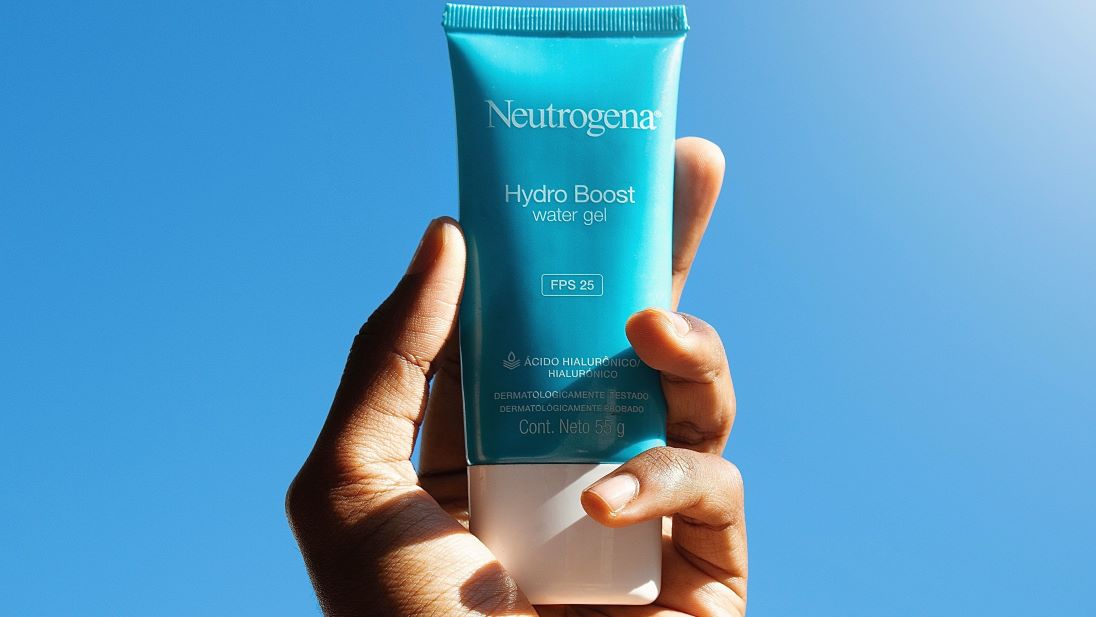Essential oils are odorous products generally of complex composition, obtained from a botanically defined plant raw material both by distillation with water vapour and by pressing. These oils are naturally synthesised by plants for various purposes like defence against insects, reproduction, or communication. They are highly fragrant and volatile, with their quantity influenced by factors such as plant species, climate, and soil type.
Essential oils can be derived from different parts of plants, including flowers, leaves, fruits, roots, and bark. Flowering tops (lavender, rosemary, thyme); flowers (chamomile, orange, jasmine, violet); leaves (basil, eucalyptus, verbena); fruits (anise, fennel, pepper, juniper, vanilla); pericarp of fruits (orange, bergamot, lemon); roots and rhizomes (iris, ginger); bark (cinnamon).
Accepted extraction methods include steam distillation and cold pressing, particularly for citrus fruits. It’s important to handle essential oils with caution as they contain chemical compounds that pose inherent risks if proper precautions are not taken. The European Union classifies essential oils as hazardous substances and requires clear and adequate information for safe handling. To understand better essential oil regulations in the EU, follow the guide.
Production of essential oils
The production of essential oils typically occurs on farms where the original plants are grown, adhering to local legislation such as Italy’s Legislative Decree 75/2018. According to these regulations, farmers are permitted to cultivate, harvest, and initially process medicinal plants directly on their farms without requiring additional authorization. Initial processing encompasses various activities, including the extraction of essential oils from freshly harvested plants or plant parts.
Essential oils are derived from officinal plants, a designation based on national tradition and signifying plant species suitable for use in various product categories after meeting compliance requirements. Once produced, essential oils can be utilised in diverse productions, provided they comply with relevant regulations and production requirements or authorizations for each category.
Regardless of their intended use or classification, essential oils must be appropriately labelled to indicate their intended function and should not be marketed without specific usage instructions and appropriate warnings. To determine the correct classification of a product based on essential oils, various factors must be considered, including the intrinsic characteristics of the oil, its traditional uses, and documented evidence of its functions.
It’s important to emphasise that a single product, such as an essential oil, cannot be attributed with multiple uses. The principle of non-cumulation dictates that a product must have a single, specific function and purpose, clearly indicated on its label. Accordingly, each product must align with a single type of production and adhere to a specific reference standard (e.g., cosmetics, food, food supplements).
For example, the same essential oil, like lemon oil, cannot be marketed for both cosmetic and food flavouring purposes, despite its potential uses in both areas. To sell it for multiple uses, distinct finished products must be created, each meeting the respective regulations and featuring different labels and indications, even if the essential oil itself remains identical.
Regulatory references for using essential oils in professional contexts and in products for human care and well-being are provided below. It’s worth noting that essential oils may also find applications in animal care and well-being, governed by specific regulations not covered in this.
Intended use and reference legislation

Raw material essential oil
In the intermediate stages between production and incorporation into finished products, essential oils are considered “raw material” and are subject to regulations governing the production and marketing of substances and preparations. Consequently, they fall under the scope of the CLP Regulation for classification, labelling, and packaging, as well as the REACH Regulation if production exceeds 1 tonne per year.
The CLP Regulation mandates operators to identify hazard classes of substances and mixtures, determine their classification accordingly, communicate hazards along the supply chain through product labelling, provide Material Safety Data Sheets (MSDS), and notify mixtures on the PCN portal. These regulations aim to inform workers and users about potential hazards and the necessary precautions for safe handling to mitigate risks.
Regarding labelling, the CLP Regulation introduces new classification criteria to precisely identify substances and associated hazards, communicated through standard indications and pictograms on labels and safety data sheets. Manufacturers and importers bear the responsibility for appropriately classifying, labelling, and packaging substances placed on the market.
However, the CLP Regulation does not apply to substances and mixtures in finished product forms intended for end-users, such as medicinal products, veterinary medicines, cosmetics, medical devices, or food and feed items.
Essential oils are classified as hazardous substances under the CLP Regulation, necessitating compliance with labelling and information requirements before incorporation into consumer products. Additionally, proper packaging and labelling are essential, adhering to detailed regulations based on the material being transported and the means of transport utilised for hazardous goods.
Essential oils in cosmetics: Compliance with Regulation 1223/09
Essential oils find extensive use in cosmetic products due to their aromatic and perfuming properties. They are often added to creams, oils, or bath water for cosmetic purposes, albeit with caution and following a thorough risk assessment—a requirement mandated by cosmetics legislation for placing a product on the market.
Under Regulation 1223/09 on cosmetic products, any essential oil or product containing essential oils intended for cosmetic use must comply with specific provisions. According to this regulation, a cosmetic product is defined as “any substance or mixture intended to be applied to the external surfaces of the human body (epidermis, hair system and hair, nails, lips, external genital organs) or to the teeth and mucous membranes of the mouth for the sole or main purpose of cleaning, perfuming, change their appearance, protect them, keep them in good condition or correct body odours.”
Essential oils for cosmetic use: plant restrictions and regulatory compliance
An essential oil intended for cosmetic use must derive from plants allowed for use in these types of products. Annex II of the Cosmetics Regulation lists 92 plant species and their derivatives that are explicitly prohibited for cosmetic use. Additionally, some substances naturally present in essential oils, such as safrole, methyleugenol, and furocoumarins, are strictly regulated in terms of quantitative limits in finished products.
Cosmetic products must be suitable for application to the skin or skin appendages, exclusively for external use, and not intended for ingestion. Their functions include cleaning, perfuming, changing appearance, protecting, maintaining condition, or correcting body odours. These functions can be primary or secondary, provided they comply with Regulation (EC) 655/2013, which establishes common criteria for justifying claims used in cosmetic products.
The guide made available by the Commission, last updated in 2017, is also useful.
Safety Requirements for Cosmetic Products
Any cosmetic product made available on the market must be safe for human health when used under normal or reasonably foreseeable conditions of use. This includes considering its presentation, labelling, instructions for use and disposal, and any other information provided by the responsible person. Compliance with Directive 87/357/EEC is essential.
Technical Dossier and Safety Report
To demonstrate the safety of the cosmetic product, the responsible person must draw up a technical dossier pursuant to Article 10 of the Cosmetics Regulation. This dossier contains all data relating to the quality and safety of the essential oils (or the complex if the product contains a mixture of them). Based on the recommended use, the responsible person must prepare the Safety Report referred to in Annex I of the Cosmetics Regulation, followed by the subsequent safety assessment. The individual performing the cosmetic safety assessment must have adequate qualifications for this role.
Importance of Labelling
The label is a fundamental element of a cosmetic product’s safety. It provides all necessary information to identify the product, its functions, prevent incorrect use, and avoid risks to the consumer. The packaging/container of the cosmetic containing essential oils must be labelled in accordance with Article 19 of Regulation 1223/09.
The label must include required information in indelible, easily legible, and visible characters, regardless of the packaging size and quantity contained. It should also contain warnings to avoid incorrect use, such as “for external use only,” “do not ingest,” “avoid contact with eyes, nose, mucous membranes, and auricle,” and “keep out of reach of children.” Read our in-depth article on product labelling for more details.
Ingredient Listing and Allergen Information
The list of ingredients must include allergenic substances as defined by the Scientific Committee of Experts working alongside the European Commission in assessing the risks associated with substances used in cosmetics. The list, updated by Regulation 1545/2023, includes allergens that may be present in synthetic chemicals or natural plant derivatives, including essential oils.
The obligation to indicate allergens on the label applies if they are present at concentrations greater than 0.001% in products not intended for rinsing and greater than 0.01% in products intended for rinsing, as specified in the relevant Annex of the Regulation.
Submission to the European Commission
Before placing the cosmetic product on the market, the responsible person must submit information to the European Commission via the CPNP Portal. This information includes details about the person responsible for the cosmetic product, the category, the intended use, and the composition of the product. It should also highlight the possible presence of certain ingredients considered to be of particular concern for consumer health and the reasonably foreseeable exposure conditions.
Regulatory challenges in France for essential oil-based cosmetics
In France, one of the European countries with the most active regulatory controls, the ANSM issued various injunctions against companies marketing essential oil-based products as cosmetics during the first half of 2018. These actions were part of the ANSM’s oversight activities concerning cosmetics.
Among the main issues identified were non-compliant labels regarding the functions and intended use of the products, and the absence of adequate warnings and instructions for use. This led to incorrect product classification. Additionally, there were problems with the technical documentation available to the authorities. In most cases, the documentation consisted only of the technical data sheets provided by manufacturers, treating essential oils as raw materials without sufficient detailed information.
Another significant issue was the absence of the safety report required by Annex I of the Cosmetics Regulation 1223/2009. Previously, in 2014, the DGCCRF conducted a survey on essential oils and identified inadequate labelling and a lack of specific intended use among the non-conformities. Out of 44 samples analysed, only one was compliant, resulting in a non-compliance rate of 81%.
Producers argued that the lack of specific regulations for essential oils made it difficult to determine applicable rules. They contended that bringing products into compliance involved navigating a series of complex and, in their view, inconsistent regulations.
Essential oils in food flavouring
Many essential oils can be used in cooking, added hot or cold to flavour a dish or impart a certain flavour. The European regulation on flavourings has laid down a series of provisions relating to labelling and the obligations of the person responsible for placing them on the market.
The reference is Regulation 1334/2008, which regulates flavourings and certain food ingredients with flavouring properties intended to be used in and on foods. Flavourings are used to enhance or change the smell and/or taste of food for the benefit of the consumer. Flavourings may only be used if they comply with the criteria laid down in that regulation.
Labelling and compliance for essential oils
These criteria also apply to the labelling of packaging, whether flavourings are intended for consumption or sale to end consumers. The production and marketing of a flavouring, like that of any food, must be carried out by a registered and authorised food business operator (FBO). An FBO is defined as “the natural or legal person responsible for ensuring compliance with the provisions of food law in the food business under his or her control.” As an FBO, the flavouring producer is required to comply with all current food regulations at all stages of the production process in relation to production hygiene aspects, the presence of any contaminants and pesticide residues, and the correct labelling of finished products.
Classification and novel foods for essential oils
Not all essential oils can be classified as flavours. To be considered as such, and in the absence of a European list of usable plant species at the moment, one must rely on the documented history of the use of that essential oil as a flavouring derived from a specific plant. This history must date back to before 15 May 1997. If this documentation is unavailable or non-existent, the essential oil is considered a novel food and cannot be used in any food or even as a flavouring.
Information requirements for essential oils
When flavourings are sold separately or in combination with other flavourings to third parties, such as wholesale distributors or companies that will use them in their products, the packaging or containers must bear certain information, namely:
- the sales description: the term ‘flavouring’ or a more specific name or description of the flavouring;
- the claim ‘for food’ or ‘for food (limited use)’ or a more specific indication of the food use for which the flavouring is intended;
- if necessary, the special conditions of storage and/or use;
- an identification mark of the batch or lot;
- in descending order by weight, a list of the categories of flavourings present and the names of each of the other substances or materials contained in the product;
- the name or business name and address of the manufacturer, packer or seller;
- an indication of the maximum quantity of each component or group of constituents subject to a quantitative restriction in food and/or appropriate information, formulated in a clear and easily understandable manner, enabling the purchaser to comply with this Regulation or other relevant Community legislation;
- the net quantity and the date of minimum durability or expiry date;
- if applicable, any allergens present.
The term ‘natural’ may only be used to describe a flavouring if the flavouring component contains only flavouring preparations and/or natural flavouring substances. Where flavourings are sold separately or in combination with other flavourings to final consumers, they may be placed on the market only if their packaging bears the words ‘food-related’ or ‘food-safe (limited use)’ or ‘food-grade (limited use)’ or a more precise indication of the food use for which the flavourings are intended and the other information required pursuant to Regulation 1169/11, namely:
- the name of the food;
- the list of ingredients;
- if applicable, any allergens present (Annex II of Reg.1169/11)
- the quantity of certain ingredients or categories of ingredients;
- the net quantity of the food;
- the date of minimum durability or the expiry date;
- special storage conditions and/or conditions of use;
- the country of origin or place of provenance, where applicable…;
- instructions for use, in cases where their omission would make it difficult to use the food properly;
- a nutrition declaration.
Essential oils in dietary supplements
Similar to flavourings, the production and marketing of a food supplement must be carried out by a registered and authorised food business operator (FBO). Workshops involved in the production and/or packaging of food supplements must be authorised in advance in accordance with the provisions of the various national regulations transposing Directive 2002/46/EC on food supplements.
A food supplement is a type of food intended to supplement the common diet. It is a concentrated source of nutrients, such as vitamins and minerals, or other substances with nutritional or physiological effects. These substances can include, but are not limited to, amino acids, essential fatty acids, fibre, and plant extracts. Supplements can be both mono-compound and multi-compound, and they are marketed in pre-dosed, pre-packaged forms.
Use of essential oils in dietary supplements
Not all essential oils derived from plant sources can be used in dietary supplements. Similar to flavourings, essential oils must meet specific criteria to be included in food supplements. Under the Novel Food Regulation, an essential oil must have a documented history of significant use in food, derived from a specific plant, dating back to before May 15, 1997. If this documentation is unavailable or non-existent, the essential oil is considered a novel food and cannot be used in food supplements.
Labelling of dietary supplements with essential oils
The label of a food supplement must contain nutritional and health claims chosen from those authorised. This can be challenging, especially for plant extracts and derivatives, as many claims are still being evaluated at the European level.
Essential oils in air fresheners

An essential oil can be marketed as an air freshener. This type of product can be sold throughout Europe based on unambiguous rules. The reference for this is the CLP Regulation. Consequently, in addition to product information, the packaging must include safety pictograms and risk phrases relevant to the identified risks. These are aimed at avoiding incorrect use by consumers, especially children and the elderly.
Safety measures and packaging requirements
To prevent inappropriate use or accidental ingestion in large quantities, even the smallest packages should be equipped with dosing caps and safety closures. In some countries, such as Germany, the lack of such risk reduction measures is considered a serious non-conformity, and the packs may be subject to recall from the market. Safety pictograms and risk phrases should be relevant to the classification to which the specific essential oil is subject.
Labelling allergens in essential oils for ambient use
The label of essential oils intended for ambient use must also indicate substances identified as allergens if they are present. This is similar to the requirements for cosmetics, as consumers can be sensitive to these allergens even when they are dispersed in the environment. Specifically, the allergens listed in Annex II of the Cosmetics Regulation, updated with Regulation 1545/2023, must be indicated.
Ambient fragrance label requirements
On the container, which should ideally have a dosing cap or drops mechanism, the following information must appear clearly visible and legible:
- legal or commodity name of the product;
- name or company name or trademark and registered office of the manufacturer or an importer established in the European Union;
- country of origin if located outside the European Union;
- any presence of materials or substances that may cause damage to humans, property or the environment based on the CLP and corresponding pictogram and related UFI code;
- Instructions, any precautions and intended use, where useful for the use and safety of the product (e.g. keep out of reach of children, do not ingest, external use, avoid contact with eyes and mucous membranes, if the product accidentally comes into contact with eyes and mucous membranes rinse thoroughly with water, if irritation persists consult a doctor…)
Essential oils in biocidal products
Certain essential oils can be used to disinfect, descale, or simply clean surfaces. They are also found in detergents, fabric softeners, and aerosols (such as insecticides and deodorants). Products that claim disinfectant, repellent, or insecticidal action fall into the category of biocidal products.
Definition and regulation of biocidal products
The definition of “biocidal product” is set out in Article 3 of Regulation 528/2012, which regulates this category of products.
“A Biocidal product is any substance or mixture in the form in which it is supplied to the user, consisting of or containing or capable of generating one or more active ingredients, with the aim of destroying, eliminating and rendering harmless, preventing the action or other controlling effect on any harmful organism, by any means other than mere physical or mechanical action.”
Authorization requirements for biocidal products
According to the regulation, products in this category cannot be placed on the market unless authorised. The essential condition for granting the authorization of a biocidal product is that the active substances contained in it are included for the correct product type (PT) in the positive list of active substances, approved at the Union level, or in Annex I to Regulation 528/2012.
Application process for market authorization
Companies wishing to place biocidal products on the market must submit an application for biocidal product authorization to their Ministry of Health. This ministry will issue the authorization for the placing on the market and use of the biocidal product, provided that the product contains an active substance included in the positive list according to Regulation 528/2012.
Labelling requirements for biocidal products with essential oils
Biocidal products must be labelled with the name of the active substance (essential oil in this case), its concentration and function, as well as warnings and instructions for use to avoid risks to human, animal, and environmental health.
Essential oils in drugs
An essential oil intended for use, for example, for the treatment of respiratory system diseases and administered accordingly, is considered a presentation drug. A drug is any substance or combination of substances presented as having curative or prophylactic properties for human diseases.
Regulatory framework for essential oils in drugs
The reference EU directives are 2001/83 and 2017/1572 on medicinal products for human use. These directives, transposed by individual member states, regulate the marketing of medicinal products for human use, including homoeopathic and herbal medicines. They provide specific rules on the authorization regime, import, good manufacturing practice guidelines, labelling and package leaflets, wholesale distribution, advertising, pharmacovigilance, and penalties for breaching these rules.
Classification and registration of essential oils as medicinal products
An essential oil could fall into the category of a traditional medicinal product of plant origin or traditional herbal medicine. A simplified registration procedure (depending on Member States’ transposition) may be applicable to medicinal products of plant origin that meet certain criteria, such as:
(a) have only appropriate indications for traditional herbal medicinal products which, by reason of their composition and therapeutic purpose, are designed and manufactured for use without medical intervention for diagnosis, prescription or monitoring during treatment;
b) it is intended to be administered exclusively at a certain dosage and dosage schedule;
(c) are preparations for oral, external or inhaled use;
(d) have been in traditional employment for a period of at least thirty years prior to the date of submission of the application, including at least fifteen years in the European Community
(e) have sufficient data of traditional use; In particular, they have been shown not to be harmful under the indicated conditions of use and their pharmacological effects or efficacy are likely to be based on experience and long-standing use.
Conclusions on essential oil regulations in the EU
To date, there is no specific legislation in Europe that exclusively regulates essential oils, their production, and marketing. Consequently, their legal status depends on the context in which they are found at different stages of the production process and subsequently on the purpose of use indicated on the container of the product intended for consumption.
Essential oils can be used in various ways and for many purposes. They can be used in diffusers as air fresheners, added to bath water or creams, ingested in food or food supplements, or used as antimicrobials in biocides.
These possible uses are highly differentiated because essential oils are complex mixtures of highly concentrated chemicals that can perform numerous tasks. For any product intended for the market, it must be defined for a single intended use and a single type of production. It is not possible to attribute different uses to a single product, even if it is an essential oil.
These regulations are complex and varied. Contact us to understand how to ensure your product complies with all necessary regulations and can be placed on the market without any issues.



